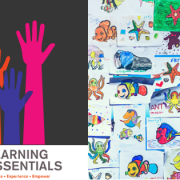Parent Conferences
Parent conferences are extremely beneficial for students and their academic success. The constructive feedback and collaborative effort that parent conferences offer provide foundations for growth, no matter the student’s previous track record or measures of ability. Like many school districts, November is the month when Montgomery County Public Schools open their doors to parents and guardians for conferences. While any meeting of the minds is beneficial to students, there are methods to optimize the conference so that both parents and teachers walk away with feedback and strategies to best support the learner at home and at school.
For the parents:
➢ Come prepared with specific questions about your child’s academic progress. Questions like, “How is so-and-so doing?” is broad and somewhat generic, which will likely beget a broad response and leave the teacher with little direction with which to steer the conversation. Instead, review recent grades or classwork at home with your child and prepare to discuss specific areas of weakness on recent tasks. This allows the teacher to focus in on specific areas of need and strategies for growth.
➢ Consider asking questions that span beyond academic success. Ask about participation, where your students sit in the classroom, if they are socializing or pairing up during partner or group work, how frequently they ask questions or come in for extra help during lunch, if they arrive to class on time and with necessary materials? Beyond the academic picture, answers to these questions provide parents with an overall view of their child as a learner.
➢ Be ready to listen to constructive feedback about your child’s behavior. Often times, the child you see at home is a slightly (or sometimes vastly) different person from the student, athlete, peer or persona that your child displays at school. Teachers are good at navigating precarious conversations about behavior, but they also aim to provide genuine feedback. Therefore, some information may be surprising or difficult to hear, but know that they will follow up their concerns with helpful strategies and new approaches to remedy any issues.
➢ Feel free to take notes. These meetings involve a lot of feedback from several different teachers, especially when your child is at the secondary level. It might be difficult to remember the key pointers from each teacher, particularly when your child’s abilities and behaviors vary from subject to subject. Therefore, a quick jot of each teacher’s talking points will ensure that you can refer back to these observations and suggestions when discussing with children at home.
For the teachers:
➢ Aside from current grade sheets, compile a few work samples with your feedback or comments included. Photo copy these samples so that parents have the option to take them home for further discussion with their child. If possible, provide a range of the student’s written responses or essays and include the rubric so that parents have an idea of what the task entailed and where their child may need help.
➢ Lead with positive comments so that the conversation is balanced. It is difficult for parents to hear criticism of their child; they may become overwhelmed or even defensive during a tough conversation. Talk about the student’s unique strengths first if you know that you will need to venture into a more critical conversation regarding his or her struggles.
➢ Prepare to offer strategies and resources that students can use outside of school to improve their areas of need. There are many online resources and apps that can help students with everything from spelling and typing to geometry and study skills—the problem is, parents often need guidance when finding age-appropriate and ability-specific resources that also align with the Common Core State Standards. A quick reference guide will help ease the stress of finding additional supports to use at home.
➢ Ask about the student’s interests, extracurricular activities, weekend obligations, and study habits. Answers to these questions can provide helpful insight into the student’s after-school schedule and ability to juggle social, academic, and home obligations. This also opens the door to discuss time management skills and how to ensure that academics remain a priority.














